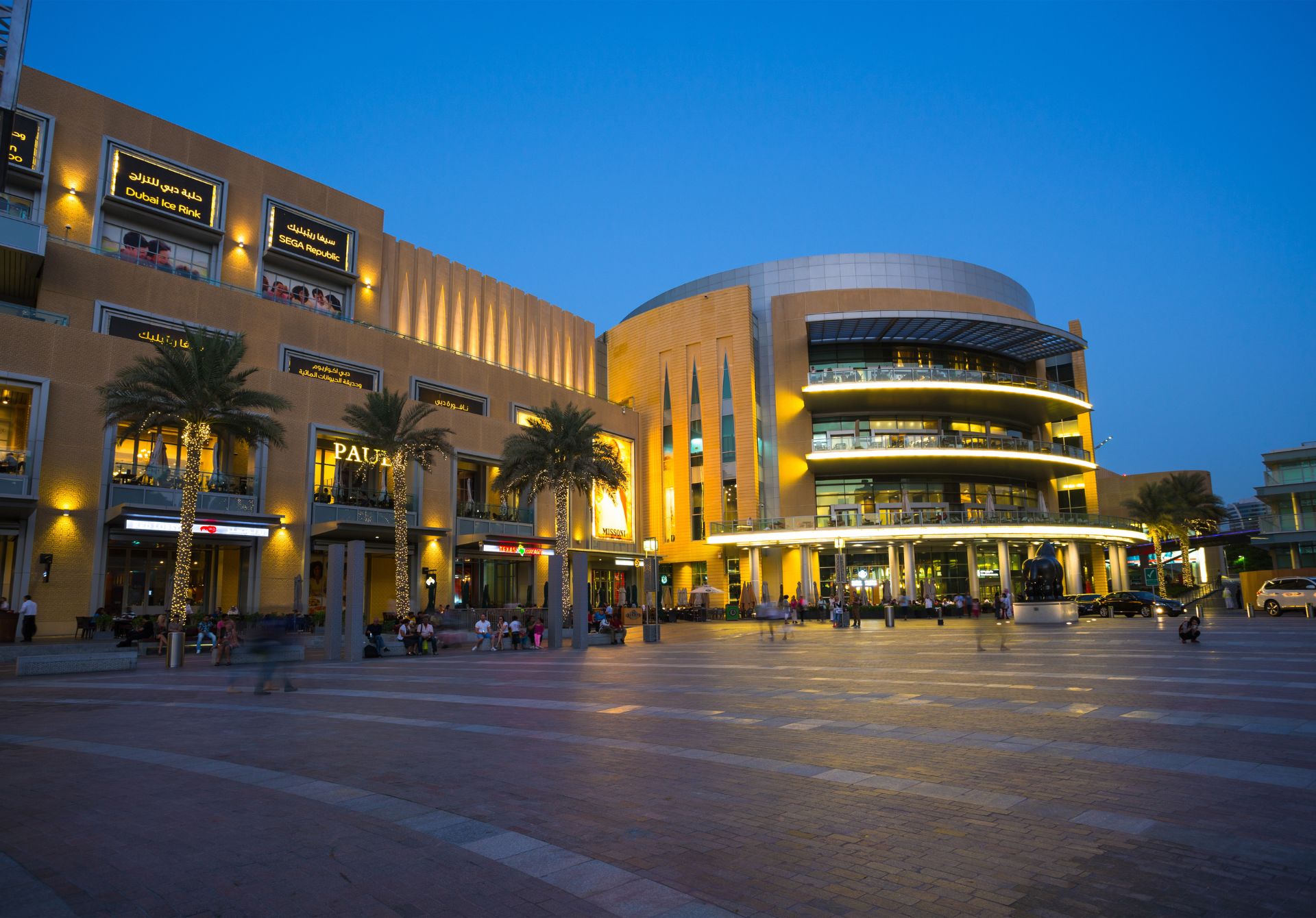Dubai, a city that has transformed from a modest fishing village to a global metropolis in just a few decades, boasts two iconic landmarks that epitomize its rapid development: The Dubai Mall and Sheikh Zayed Road. These marvels of modern architecture and urban planning stand as testaments to the emirate’s ambition, innovation, and economic prowess.
The Dubai Mall: A Shopper’s Paradise and Tourist Magnet
Opened in 2008, The Dubai Mall has quickly become one of the world’s most visited retail and entertainment destinations. Spanning over 12 million square feet, it’s not just a shopping center but a small city within itself.
Retail Excellence
With over 1,200 retail outlets, including flagship stores of luxury brands and popular high-street labels, The Dubai Mall caters to every shopper’s taste and budget. In 2019, the mall welcomed a staggering 84 million visitors, solidifying its position as a global retail powerhouse.
Entertainment Galore
The mall’s appeal extends far beyond shopping. It houses the Dubai Aquarium and Underwater Zoo, featuring a 10-million liter tank with over 33,000 aquatic animals. The Dubai Ice Rink offers year-round skating experiences, while KidZania provides educational entertainment for children. These attractions collectively drew millions of visitors in 2022, contributing significantly to Dubai’s tourism sector.
Architectural Marvel
The Dubai Mall’s design is a blend of modern architecture and traditional Arabic elements. Its Fashion Avenue expansion, completed in 2018, added 150 luxury brands and stunning features like a new entrance with an oculus skylight. This architectural feat has won numerous awards, including the “Best Retail Architecture” at the Arabian Property Awards in 2009.
Sheikh Zayed Road: The Artery of Modern Dubai
Named after the UAE’s founding father, Sheikh Zayed bin Sultan Al Nahyan, this 55-kilometer highway is the longest road in the Emirates and serves as Dubai’s main artery.
Skyscraper Central
Sheikh Zayed Road is flanked by some of the world’s most impressive skyscrapers. The iconic Emirates Towers, completed in 2000, marked the beginning of Dubai’s vertical expansion. Today, the road is home to the Burj Khalifa, the world’s tallest building at 828 meters, which attracts over 2 million visitors annually to its observation decks.
Economic Powerhouse
The road is more than just a transportation corridor; it’s the backbone of Dubai’s economy. The Dubai International Financial Centre (DIFC), established in 2004 along Sheikh Zayed Road, has become a leading global financial hub. As of 2023, DIFC is home to over 3,600 active registered companies and contributes significantly to Dubai’s GDP.
Transportation Hub
Sheikh Zayed Road is an integral part of Dubai’s sophisticated transportation network. The Dubai Metro, which runs parallel to the road for much of its length, carries over 200 million passengers annually, significantly reducing traffic congestion. The road itself handles over 450,000 vehicles daily, showcasing its crucial role in the city’s mobility.
Synergy Between The Dubai Mall and Sheikh Zayed Road
The Dubai Mall and Sheikh Zayed Road share a symbiotic relationship that exemplifies Dubai’s integrated urban development approach.
Accessibility and Connectivity
The mall’s strategic location adjacent to Sheikh Zayed Road ensures easy accessibility. The dedicated Financial Centre Metro Station connects the mall directly to the road and the broader city, facilitating seamless movement for millions of visitors. This integration has been crucial in managing the mall’s massive footfall, which peaked at 92 million visitors in 2019.
Economic Impact
Together, these landmarks drive significant economic activity. The Dubai Mall contributes substantially to the emirate’s retail sector, which accounted for about 26% of Dubai’s GDP in 2022. Meanwhile, the businesses along Sheikh Zayed Road, particularly in sectors like finance and hospitality, play a pivotal role in diversifying Dubai’s economy beyond oil.
Future Prospects
As Dubai continues to evolve, both The Dubai Mall and Sheikh Zayed Road are poised for further development. Plans are underway to expand the mall’s retail space and introduce more innovative attractions. Similarly, new projects along Sheikh Zayed Road, such as the Museum of the Future (opened in 2022), continue to redefine the city’s skyline and cultural landscape.
The Dubai Mall and Sheikh Zayed Road are more than just a shopping destination and a highway; they are emblematic of Dubai’s journey from a small trading post to a global city of the future. These landmarks showcase the emirate’s commitment to pushing boundaries in retail, architecture, and urban planning. As Dubai continues to grow and adapt to global changes, these icons will undoubtedly play crucial roles in shaping the city’s identity and economic future. Their success stories serve as inspirations for urban developers worldwide, demonstrating how visionary planning and bold execution can transform cityscapes and elevate a city’s global standing.
